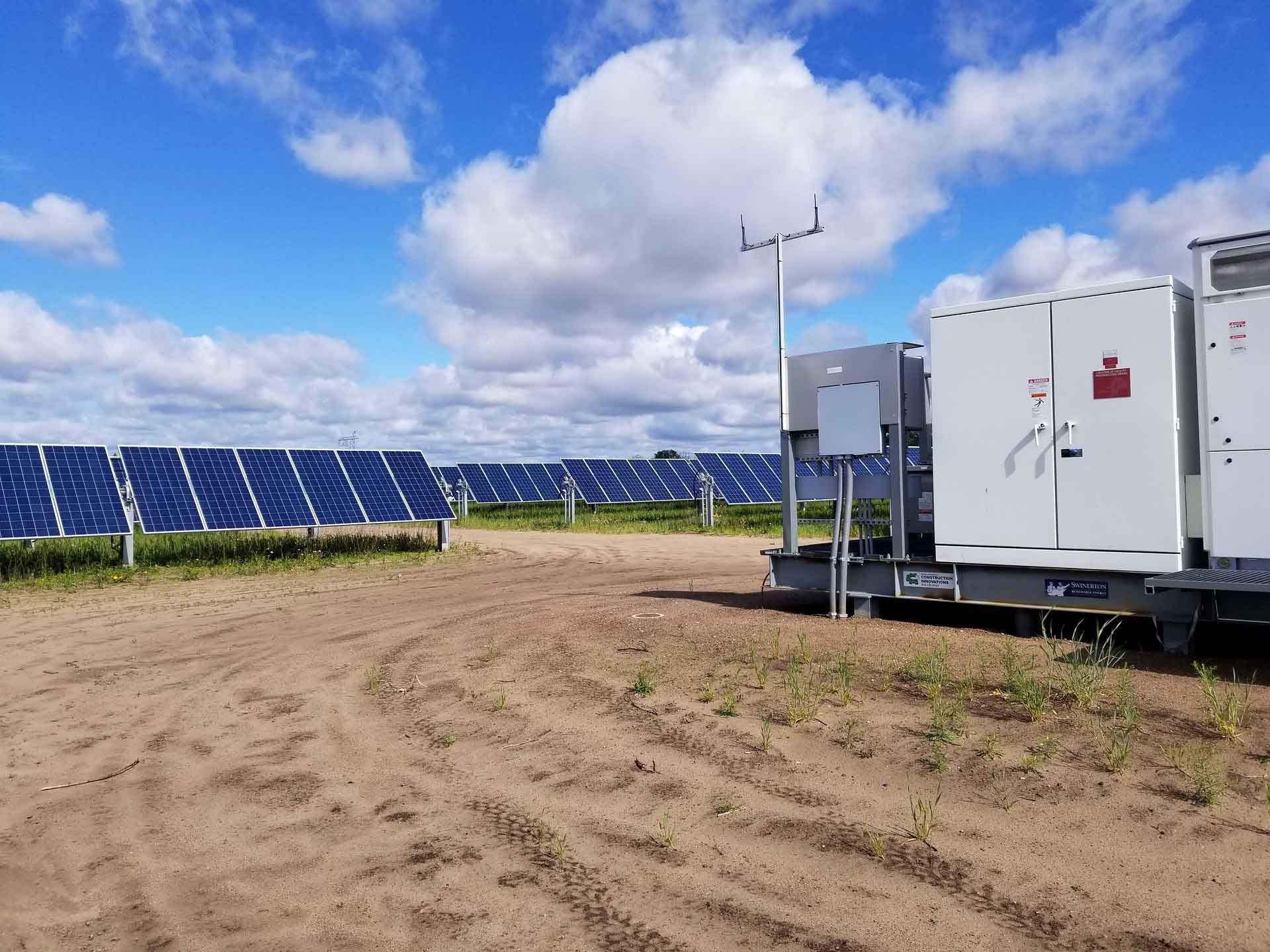Integrating inverter stations into solar farms is a critical process that ensures the efficient conversion of solar energy into electricity that can be used by the grid. This involves several steps and considerations to maximize efficiency, reliability, and grid compatibility. Here’s a general overview of how inverter stations are integrated into solar farms:

Planning and Design
- Site Assessment: Before integration, a comprehensive assessment of the solar farm site is conducted. This includes evaluating the solar irradiance levels, land topography, and accessibility for maintenance. The site assessment helps in determining the optimal placement for solar panels and inverter stations to maximize sun exposure and energy production.
- Capacity Planning: The capacity of the inverter stations is planned based on the peak power output of the solar panels. Generally, the inverter capacity is slightly larger than the expected peak power output to accommodate potential expansions and ensure that the inverters can handle the maximum power under optimal conditions.
- Grid Compatibility: The design process also involves ensuring that the inverter stations can comply with grid requirements, such as voltage levels, frequency, and phase matching. It’s crucial to select inverters with the right specifications for grid integration and to plan for any necessary grid upgrades.
Installation and Configuration
- Physical Installation: Inverter stations are strategically placed within the solar farm. Factors such as proximity to the solar panel arrays, connection points to the grid, and ease of access for maintenance are considered. The physical installation includes setting up the inverter units, transformers (if required), and protection devices.
- Electrical Connections: The DC output from the solar panels is routed to the inverter stations, where it’s converted into AC. This involves the installation of DC combiner boxes, which aggregate the output from multiple solar panels, and then connecting these to the inverters. The AC side of the inverter is connected to the grid through a series of switchgear and protection systems to ensure safe operation.
- Configuration and Testing: Once installed, the inverter stations are configured and tested. This includes setting up the inverter parameters to match the grid requirements and optimizing the system for maximum efficiency. Testing ensures that the inverters can convert solar energy into grid-compatible AC power reliably and that safety mechanisms, such as anti-islanding protection, are functioning correctly.
Integration with Monitoring and Control Systems
- Monitoring Systems: Modern inverter stations are equipped with sophisticated monitoring systems that track performance, energy production, and system health. Integrating these monitoring systems into the overall solar farm management system allows for real-time tracking and proactive maintenance.
- Smart Grid Integration: Inverters with smart capabilities can be integrated with advanced grid management systems. This allows them to participate in grid services such as demand response, voltage regulation, and frequency stabilization, further enhancing their value to the grid infrastructure.
Regulatory Compliance and Grid Connection
- Compliance with Standards: Inverter stations must comply with local and international standards regarding safety, grid connection, and performance. This includes obtaining necessary approvals and certifications before the solar farm can be connected to the grid.
- Grid Interconnection: The final step involves the interconnection with the electrical grid. This requires coordination with the local utility or grid operator to ensure that the integration meets all regulatory and technical requirements. Grid interconnection tests are conducted to ensure that the solar farm can safely and efficiently deliver power to the grid.
Integrating inverter stations into solar farms is a complex process that requires careful planning, coordination, and adherence to technical and regulatory standards. The successful integration ensures that solar farms can reliably convert and supply solar energy to the grid, contributing to the global transition towards renewable energy sources.
